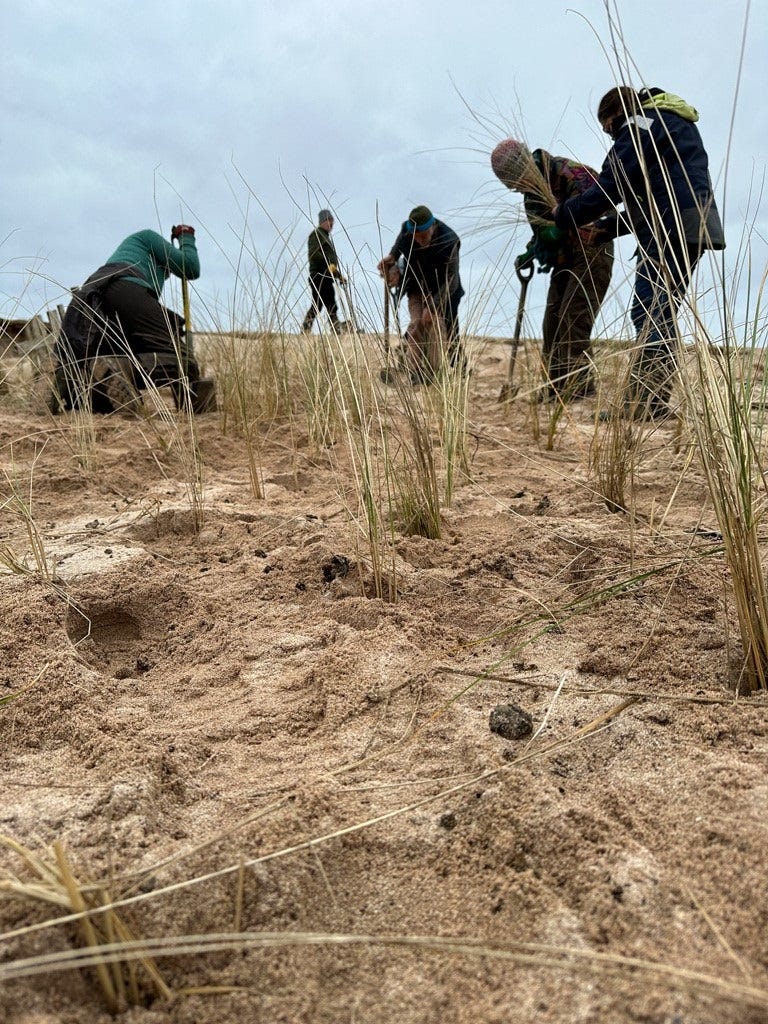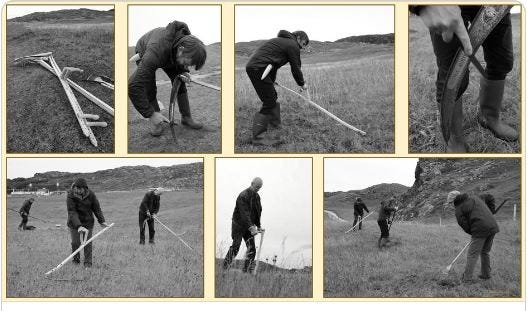The Role of Natural Ecosystems in Climate Change Adaptation: Machair Habitats
Guest Blog by Alice Tirbooman;Highland Adapts
The global climate is changing, and the rate of change is increasing. Over the last century, global average temperatures have increased, sea levels have risen, and weather patterns have changed. Even with current climate change mitigation measures, we will still see an increase in this trend, with more extreme weather events predicted over the coming years. While efforts to reduce the effects of climate change continue, we will also need to adapt to the new climatic conditions that will occur.
Climate change adaptation is the process of responding to the changing climate to lessen the impacts of climate hazards on people, infrastructure, and the landscape. This could be as simple as putting up an awning for extra shade, or as complicated as installing flood defences to prevent flooding.

When you think about adaptation measures, the first things that come to mind are probably manmade structures like storm drains or air conditioning. However natural ecosystems also have an important role to play in climate change adaptation, with the potential to provide a host of benefits that engineered solutions cannot, including increased biodiversity and carbon sequestration.
Natural ecosystems' role in climate adaptation in the Scottish Highlands: machair
Here at Highland Adapts, we spoke to the Highlife Highland Countryside Rangers about the important work they are doing to restore machair habitats on the west coast of Scotland.
Machair is a Gaelic word meaning ‘fertile plain’, it refers to unique coastal landscapes that are found only along the west coast of Scotland and Ireland. Species-rich machair wildflower meadows develop where low-lying Atlantic coast, Atlantic weather, and sustainable crofting culture coincide. Over millennia traditional, low-impact crofting practices along the coast have assisted the formation of richly patterned habitats where an abundance of wildflowers attracts rare insects and birds. Most machair systems are fronted by sand dunes. The dunes play an important role in protecting the fragile machair meadows, and areas further inland from coastal flooding, gales and from sea level rise.
The Ranger Service has been supporting the health of machair habitats at Clachtoll and Achmelvich beaches for over twenty years, coordinating with local communities and volunteers to safeguard these precious areas. They are important habitats for many species of wildlife, including great yellow bumblebees, waxcap mushrooms and orchids. To help preserve the machair, marram grass has been planted on dunes at the back of the beach. The Ranger Service works with volunteers to plant the marram grass, and with local crofters to graze the site at the right time of year. The grass has established well over the years, where it grows it stabilises the dunes and prevents sand from blowing off the beach and into the road and people’s houses. Marram has also been planted further inland to halt erosion of the machair.
Andy Summers, Senior Countryside Ranger for North Highlands told us that:
‘Work continues transplanting Machir grass to Clachtoll seafront. Scarce species live in machair, which benefits from managing the area to promote high biodiversity. The variety of plants encourage a variety of invertebrates, which encourage birds to the machair to feed and breed. The machair also helps to stabilise the sand-dunes. Sand dunes play a huge role in coastal protection. Dunes shelter inland habitats from coastal flooding and from the worst of the winds during storms.’

Shifting landscapes like these play a huge role in attenuating the full force of coastal weather. By working together to save this unique environment local crofters, volunteers, and the Highland Rangers have ensured the longevity of the beach, and protected habitats and populations further inland from coastal flooding and gales - which are happening with increasing regularity.

Machair meadows are also richly biodiverse areas, saving them not only provides climate adaptation benefits but also preserves an important habitat for wildflowers, birds, insects and for people to enjoy. And finally, the role of traditional crofting in ensuring the health of the machair is a reminder that it is possible for human and natural interests to align in a way that benefits all.

The Highland Adapts partnership was formally established in 2021 when nine founding partner organisations committed to working together to drive transformational action towards a prosperous, climate-ready Highland. High Life Highland Ranger service contribute towards the core group and advocates group that make up the partnership.
Do you have a weather story? feed into the Highland Adapts weather story map here:
Alice Tirbooman, recently joined Changeworks as a graduate trainee and is also involved with Highlands Adapts. She blends a unique academic background with practical climate action. Alice is passionate about simplifying complex ideas, especially in the realm of climate adaptation in the Highland region. She's excited to merge her distinct academic interests in Physics and English to make a real-world impact.





So enjoyed botanising on the South Uist Machair last September. Saw a wonderful range of wildflower species.